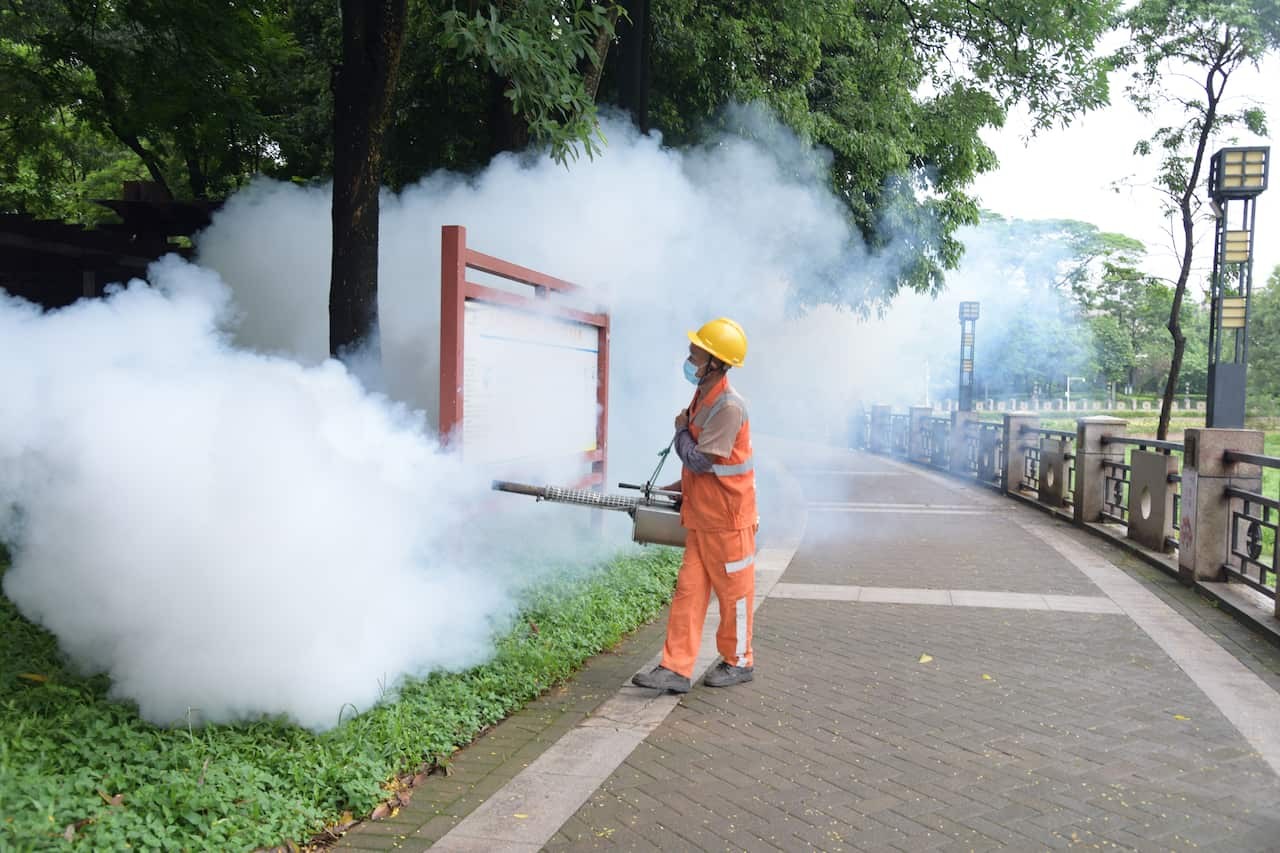Share this @internewscast.com
Back in July, the World Health Organization (WHO) made an urgent appeal for preemptive measures against a chikungunya epidemic, reminiscent of the crisis experienced worldwide in 2004-2005.

A worker sprays insecticide in Dongguan, Guangdong Province, in an effort to prevent the spread of the chikungunya virus. Source: Getty / VCG
“We are seeing history repeating itself,” Diana Rojas Alvarez, a medical officer at the WHO, said last month. She warned that 5.6 billion people across 119 countries were at risk.
Here is what you need to know about the chikungunya virus.
What is chikungunya?
The virus has now been identified in over 110 countries in Asia, Africa, Europe and the Americas.
How does the virus spread?
However, it cannot transmit directly from one person to another.
What are the symptoms?
Headache, muscle pain, joint swelling or rash, nausea, and tiredness are among the other symptoms.
Is the chikungunya virus deadly?
The Centers for Disease Control and Prevention (CDC) warns that newborns, individuals older than 65, and those with medical issues such as “high blood pressure, diabetes, or heart disease” are at heightened risk of severe illness.
Is there any cure?
According to Healthdirect, those vulnerable to infection should protect themselves from mosquito bites by using nets or screens on windows, wearing light-colored, loose clothing with long sleeves, long pants, and closed shoes, and avoiding locations where water stagnates.












